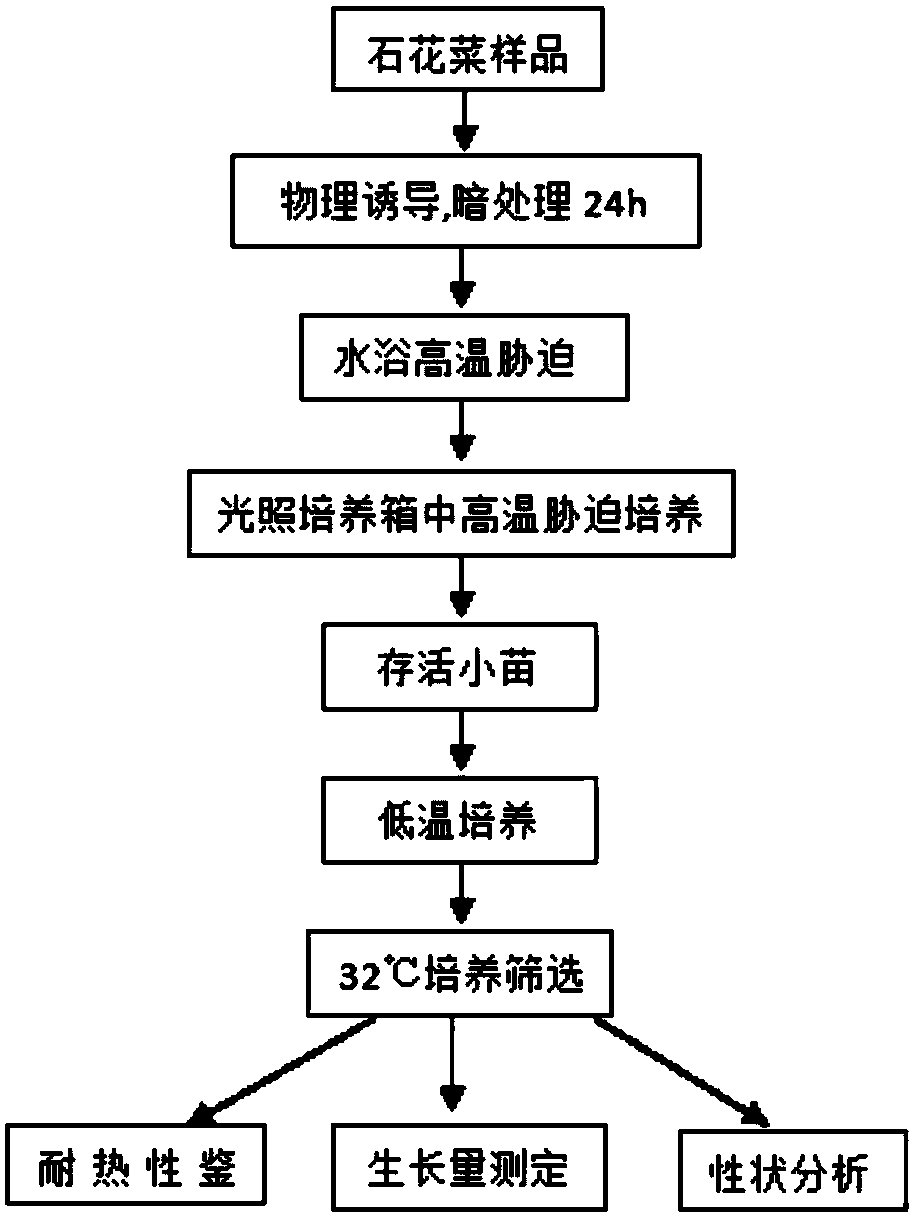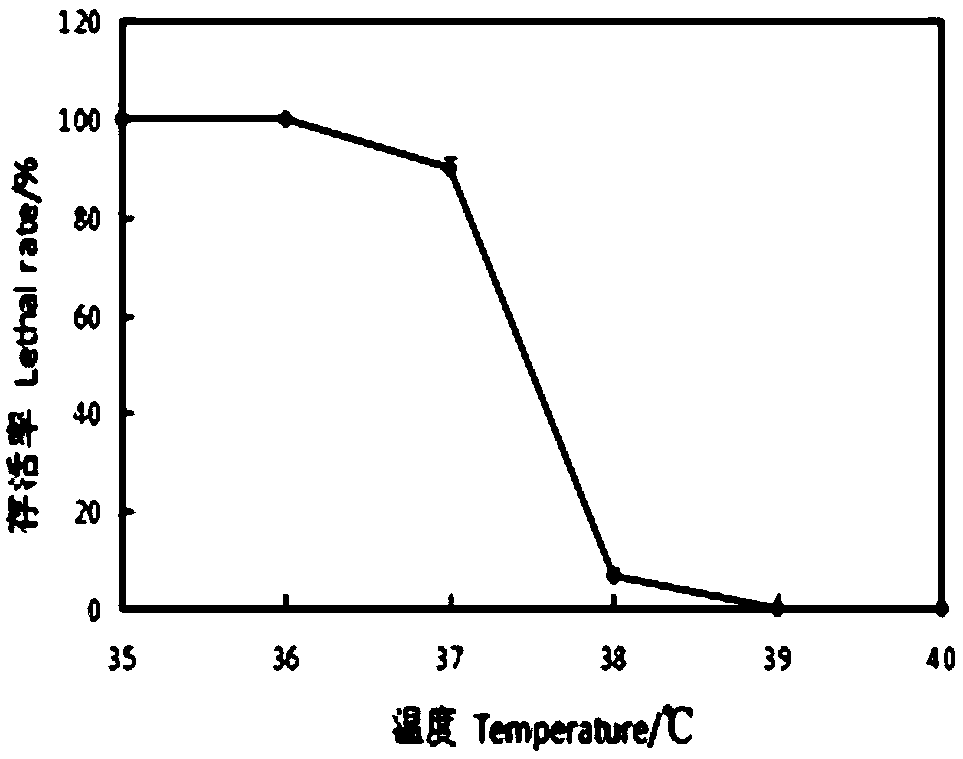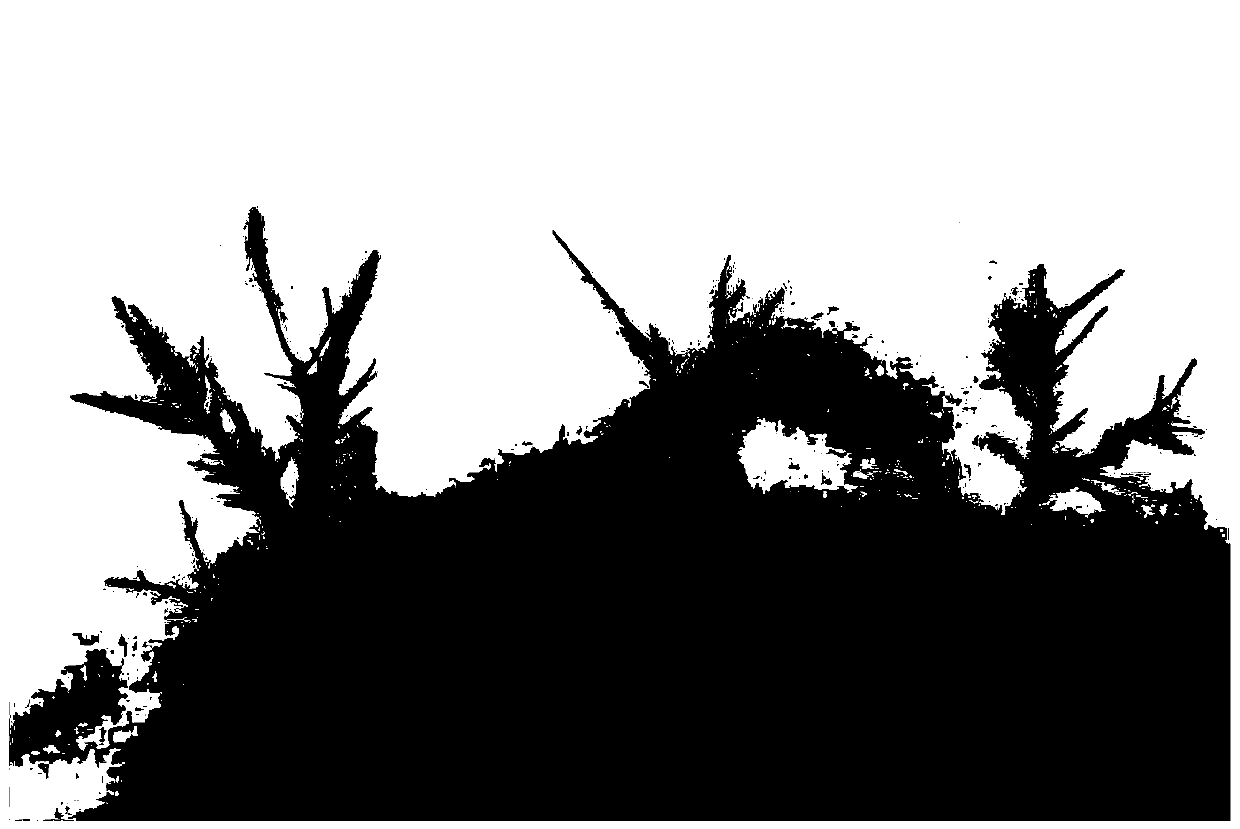Cultivation method of high-temperature-resistant gelidium amansii
A cultivating method and technology of lily, applied in horticultural methods, botanical equipment and methods, cultivation and other directions, can solve the problems affecting the yield of cultivating lily in summer, low growth temperature upper limit, poor high temperature resistance ability, etc., and achieves convenient application. , The effect of prolonged breeding cycle and fast growth rate
- Summary
- Abstract
- Description
- Claims
- Application Information
AI Technical Summary
Problems solved by technology
Method used
Image
Examples
Embodiment 1
[0035] A method for screening and cultivating high-temperature-resistant Geliflower, comprising the following steps:
[0036] (1) Collect natural growth agaricus, select under an anatomical microscope the agaricus with few algae attached organisms, complete growth points and bright color, and use a brush to remove the attachments;
[0037] (2) The algal body of step (1) undergoes 60 Coγ-rays were irradiated at a dose of 700Gy for 1h, then darkened for 24h, and the culture medium was replaced;
[0038] (3) placing the Geliflower after the dark treatment in step (2) at 39° C., and stressing it in a water bath for 30 minutes;
[0039] (4) Place the Geliflower treated in step (3) at 35° C., and culture it under light stress for 96 hours for preliminary screening of high temperature resistance, collect algal tips of surviving algae, light intensity 2500 lux, and light time 12 hours;
[0040] (5) Place the algae tips collected in step (4) at 24°C, culture them under light for 4 we...
Embodiment 2
[0057] A method for screening and cultivating high-temperature-resistant Geliflower, comprising the following steps:
[0058] (1) Collect natural growth agaricus, select under an anatomical microscope the agaricus with few algae attached organisms, complete growth points and bright color, and use a brush to remove the attachments;
[0059] (2) The algal body of step (1) undergoes 60 Coγ-rays were irradiated at a dose of 500Gy for 70min, then treated in dark for 25h, and the medium was replaced;
[0060] (3) placing the Geliflower after the dark treatment in step (2) at 38° C., and stressing it in a water bath for 35 minutes;
[0061] (4) Place the Geliflower treated in step (3) at 36°C, and culture it under light stress for 90 hours for preliminary screening of high temperature resistance, collect the algal tips of the surviving algal bodies, light intensity 3000lux, light time 10h;
[0062] (5) Place the algae tips collected in step (4) at 25°C, culture them under light for...
Embodiment 3
[0065] A method for screening and cultivating high-temperature-resistant Geliflower, comprising the following steps:
[0066] (1) Collect natural growth agaricus, select under an anatomical microscope the agaricus with few algae attached organisms, complete growth points and bright color, and use a brush to remove the attachments;
[0067] (2) The algal body of step (1) undergoes 60 Coγ-rays were irradiated at a dose of 900Gy for 50min, then treated in dark for 20h, and the culture medium was replaced;
[0068] (3) placing the Geliflower after the dark treatment in step (2) at 40° C., and stressing it in a water bath for 25 minutes;
[0069] (4) Place the Geliflower treated in step (3) at 34°C, and culture it under light stress for 100 hours for preliminary screening of high temperature resistance, collect the algal tips of the surviving algae, light intensity 2000lux, light time 14h;
[0070] (5) Place the algae tips collected in step (4) at 20°C, culture them under light f...
PUM
 Login to View More
Login to View More Abstract
Description
Claims
Application Information
 Login to View More
Login to View More - R&D
- Intellectual Property
- Life Sciences
- Materials
- Tech Scout
- Unparalleled Data Quality
- Higher Quality Content
- 60% Fewer Hallucinations
Browse by: Latest US Patents, China's latest patents, Technical Efficacy Thesaurus, Application Domain, Technology Topic, Popular Technical Reports.
© 2025 PatSnap. All rights reserved.Legal|Privacy policy|Modern Slavery Act Transparency Statement|Sitemap|About US| Contact US: help@patsnap.com



